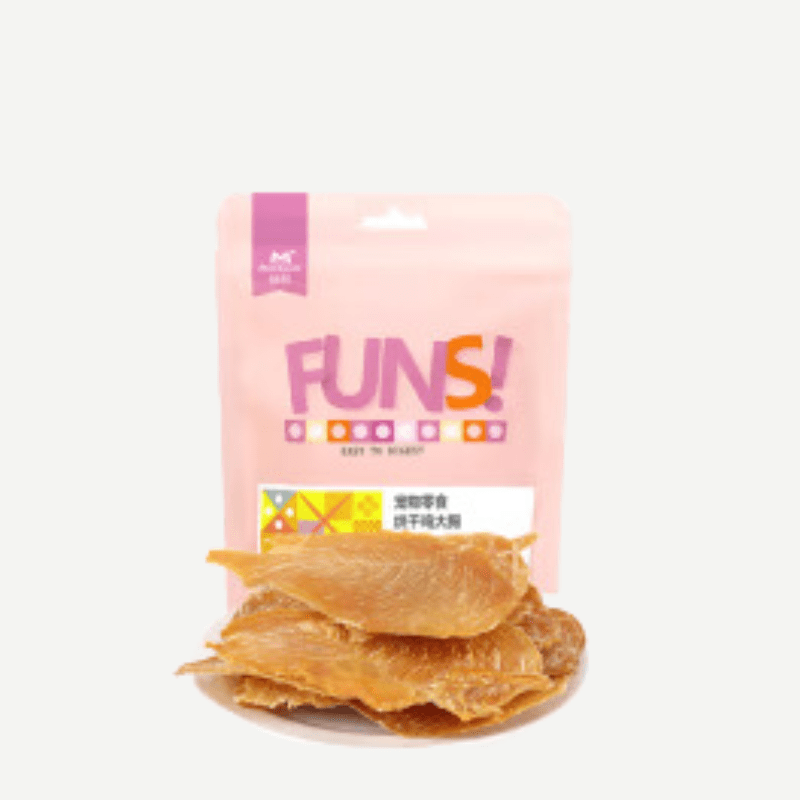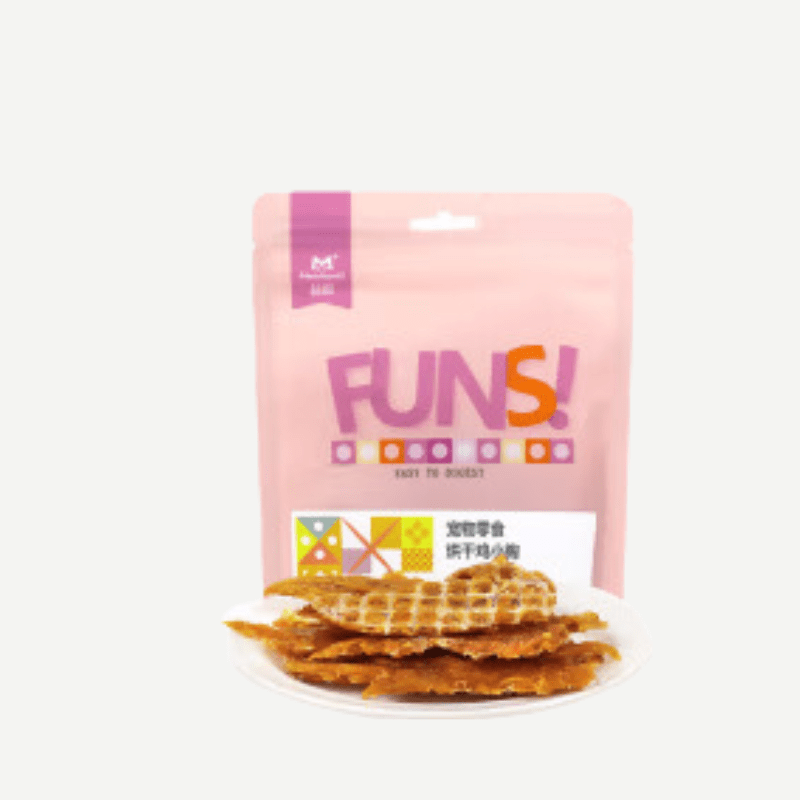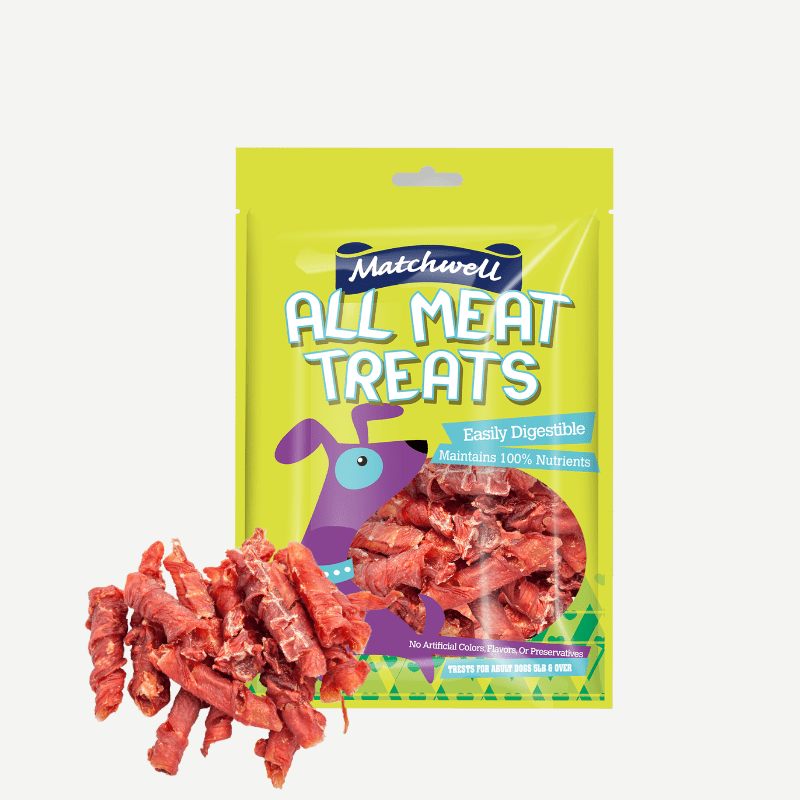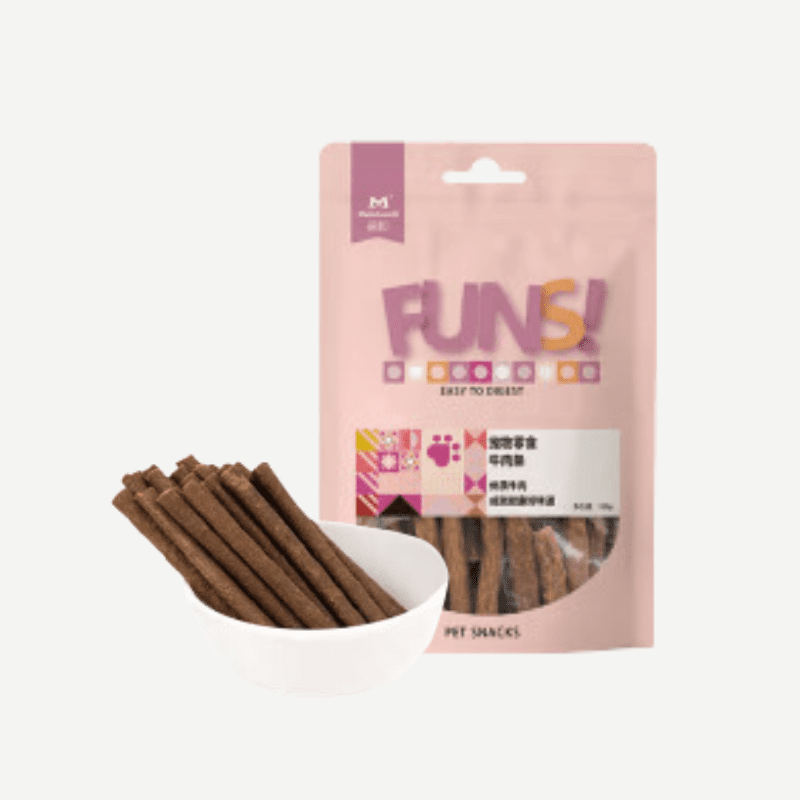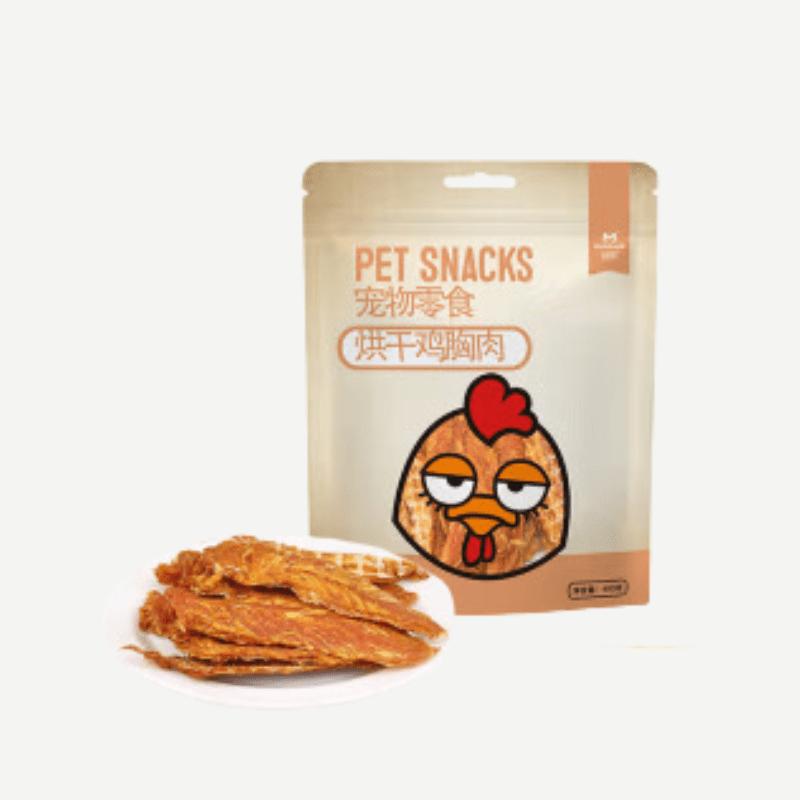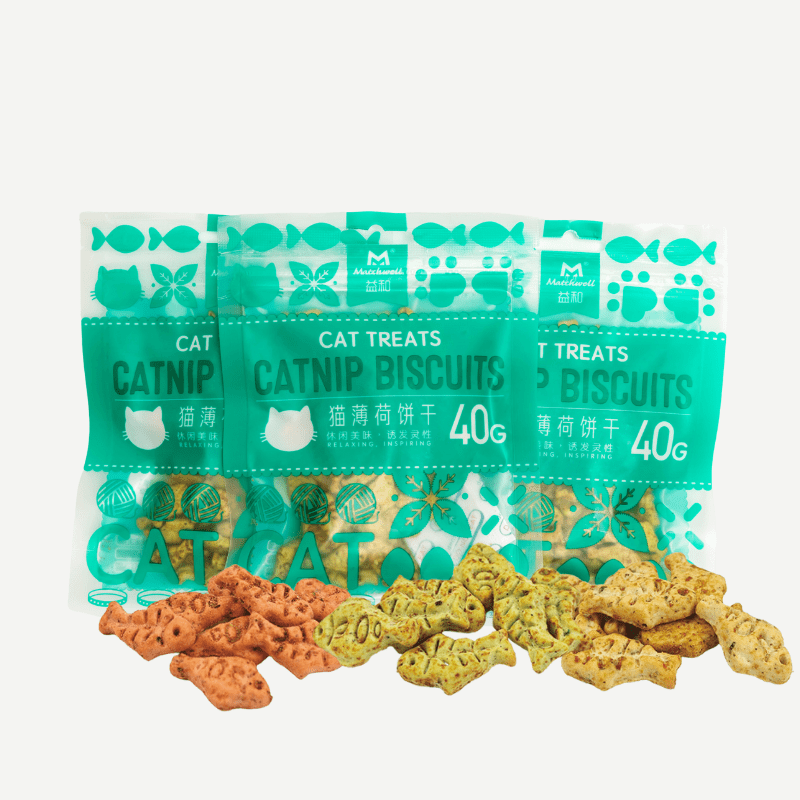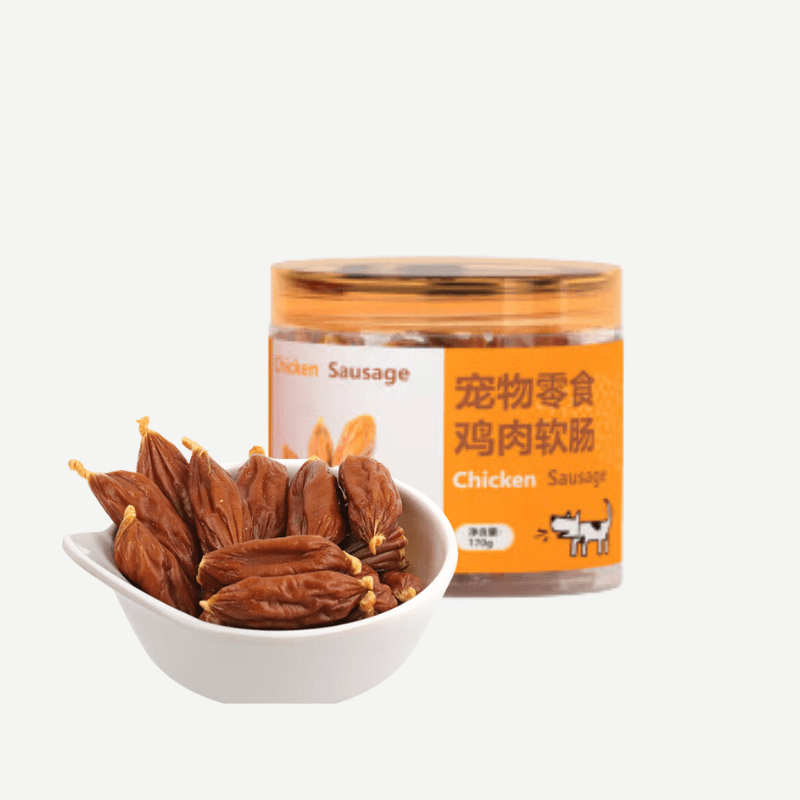
Distinguish your brand by offering the products that align with your customers’ preferences
Welcome to Matchwell, where we don’t just create pet food; we craft experiences that cater to the well-being of your furry companions. As a leading factory in China specializing in OEM and ODM services, Matchwell stands out with a commitment to quality, innovation, and customer satisfaction.
Table Of Contents For This Page
It is not easy to introduce all aspects of Pet Treat , so we have prepared a lot of information on this page for you to delve into. To make sure you can find the information you want quickly, we have prepared this content directory that will jump to the corresponding location when you click on it.
Unraveling the Mysteries of Pet Treat Ingredients: A Comprehensive Guide to Choosing the Best for Your Furry Friend
In recent years, the pet industry has witnessed a surge in the demand for high-quality and nutritious pet treats. Pet owners are becoming increasingly conscious of the ingredients in the treats they provide to their furry companions. This shift in consumer behavior is not just a passing trend; it reflects a deeper understanding of the impact of nutrition on pets’ overall well-being. In this exploration, we delve into the various ingredients commonly found in pet treats, backed by numerical research data to guide pet owners in making informed choices for their pets.

Pet Treat ingredients
- Protein Powerhouses: Meat-based Ingredients
- Carbohydrates: Balancing the Equation
- Fats: The Good, the Bad, and the Ideal Ratio
- Avoiding Allergens: A Closer Look at Common Culprits
In the ever-expanding world of pet treats, a nuanced understanding of ingredients is crucial for responsible pet ownership. Numerical research data acts as a compass, guiding pet owners toward treats that not only tantalize their pets’ taste buds but also contribute to their overall health and happiness. As we celebrate one year of exploring the intricacies of pet care, let’s continue to prioritize informed choices that enrich the lives of our beloved furry friends.
Protein Powerhouses: Meat-based Ingredients
One of the key elements in pet treats is protein, essential for maintaining muscle mass and overall health. A survey conducted by [PetHealth Insights] revealed that 87% of pet owners consider the protein source when selecting treats for their pets. Ingredients like real meat, poultry, or fish provide not only a delicious taste but also high-quality protein. Numerical data indicates that treats with a protein content ranging from 20% to 30% are preferred by pet owners, ensuring a balanced diet for their pets.
Carbohydrates: Balancing the Equation
Carbohydrates are another crucial component of pet treats, providing the necessary energy for daily activities. However, it’s essential to strike a balance, as excessive carbohydrates can lead to weight gain and other health issues. According to a study published in the [Journal of Veterinary Nutrition], treats with a carbohydrate content below 40% are associated with better weight management in pets. Understanding these numerical benchmarks aids pet owners in selecting treats that align with their pets’ nutritional needs.
Fats: The Good, the Bad, and the Ideal Ratio
Fats contribute to flavor and play a vital role in nutrient absorption. However, not all fats are created equal. Research from [PetNutritionWatch] suggests that treats with a balanced ratio of omega-3 to omega-6 fatty acids (1:4) promote healthy skin, a glossy coat, and overall well-being. Analyzing the nutritional labels and opting for treats with this optimal fat profile can have long-term benefits for pets.
Avoiding Allergens: A Closer Look at Common Culprits
Pet allergies are on the rise, prompting pet owners to scrutinize treat ingredients for potential allergens. According to a survey by [PetAllergyAware], 60% of pet owners actively avoid treats containing common allergens like wheat, soy, and dairy. Numerical data emphasizes the significance of understanding and avoiding these allergens, as they can lead to digestive issues, skin problems, and other allergic reactions in pets.
Natural vs. Artificial: The Great Ingredient Divide
The debate between natural and artificial ingredients continues to shape consumer preferences. Numerical insights from [PetIngredientSurvey] indicate that 75% of pet owners prefer treats with natural ingredients, associating them with better overall health. Understanding the significance of natural ingredients empowers pet owners to make choices aligned with their values and their pets’ well-being.

Exploring the World of Pet Treat Flavors
- Top 5 Popular Pet Treat Flavors
- Emerging Trends in Pet Treat Flavors
- Regional Flavor Preferences
- Cras ultricie
The wholesale pet treat market is a dynamic and ever-evolving landscape, shaped by the changing preferences and priorities of pet owners. Data-driven insights reveal a clear demand for diverse flavors, high-quality ingredients, and functional benefits in pet treats. Wholesale suppliers, attuned to these trends, are positioning themselves to meet the growing expectations of pet owners who seek not only delightful but also nutritious treats for their beloved companions.
Top 5 Popular Pet Treat Flavors:
According to wholesale data, the top five pet treat flavors dominating the market are:
a. Chicken: Undoubtedly a perennial favorite, chicken-flavored treats continue to reign supreme. The natural appeal of chicken makes it a go-to choice for many pet owners.
b. Peanut Butter: Loved by dogs and, in some cases, cats, peanut butter-flavored treats have witnessed a significant surge in demand. The rich and nutty taste is hard for pets to resist.
c. Salmon: Offering a dose of omega-3 fatty acids, salmon-flavored treats are gaining popularity, especially among pet owners seeking to enhance their pets’ skin and coat health.
d. Beef: The classic beef flavor remains a steadfast choice for pet owners looking to treat their furry companions with a hearty and savory option.
e. Sweet Potato: As the demand for healthier pet treat options grows, sweet potato-flavored treats have carved a niche. The natural sweetness and nutritional benefits make them a hit among health-conscious pet owners.
Emerging Trends in Pet Treat Flavors:
Wholesale data indicates that the following flavors are gaining traction and are poised to become the next big trends in the pet treat industry:
a. Turmeric: Recognized for its anti-inflammatory properties, turmeric-infused treats are becoming popular among pet owners looking to support their pets’ joint health.
b. Blueberry: Packed with antioxidants, blueberry-flavored treats are capturing the attention of pet owners seeking a tasty yet nutritious option for their furry friends.
c. Pumpkin: With digestive benefits and a naturally appealing taste, pumpkin-flavored treats are emerging as a wholesome choice for pets.
d. Duck: Providing a novel protein source, duck-flavored treats are gaining popularity, offering a unique and delicious alternative to more traditional options.
Regional Flavor Preferences:
Wholesale data also reveals intriguing regional variations in pet treat flavor preferences. For instance, coastal regions tend to show a higher demand for fish-based flavors, while inland areas may favor meat-centric options.
Wanna dig deeper in custom pet treat?
To gain a comprehensive insight into the world of pet treats, it is essential to explore the Wholesale Market. Wholesale markets play a pivotal role in the distribution and supply chain, connecting manufacturers to retailers. By analyzing data from the Wholesale Market, we can discern trends, consumer preferences, and the overall impact of pet treats on the market
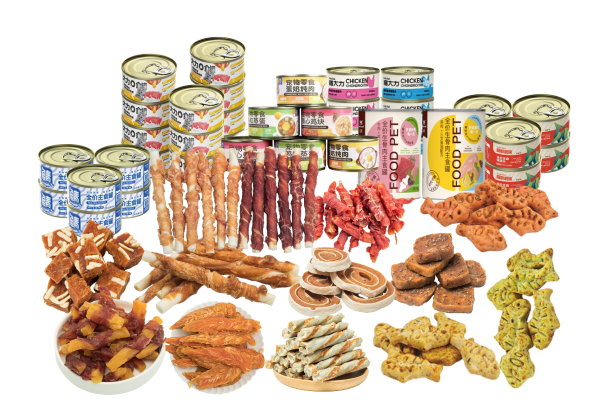
In the ever-evolving landscape of pet care, a fascinating aspect that has gained significant attention is the classification of pet treats. As our understanding of the dietary needs of our furry companions expands, so does the quest for creating treats that not only delight their taste buds but also contribute to their overall well-being. This post delves into the intricate world of pet treat classification, exploring the nuances and actual research data behind the formulations that cater to the diverse needs of dogs and cats.
- Understanding the Basics: What Constitutes a Pet Treat?
- Understanding the Basics: What Constitutes a Pet Treat?
- Nutritional Composition: Unveiling the Core Ingredients
- Specialized Treats for Dietary Restrictions
- Functional Treats: Beyond Taste Satisfaction
- Treats for Different Life Stages: From Puppies to Seniors
- The Rise of Natural and Organic Treats: A Health-Conscious Shift
- Treats for Enrichment: Mental Stimulation Matters
- The Regulatory Landscape: Ensuring Safety and Compliance
- Challenges and Future Directions in Pet Treat Classification
Understanding the Basics: What Constitutes a Pet Treat?
Pet treats, much like snacks for humans, come in various forms, sizes, and flavors. While some are designed for training purposes, others serve as dental aids or nutritional supplements. The ingredients used in these treats play a crucial role in determining their classification and impact on the pet’s health.
Nutritional Composition: Unveiling the Core Ingredients
A pivotal aspect of pet treat classification lies in the nutritional composition. Research data has shown that high-quality treats often incorporate a balance of proteins, fats, and carbohydrates, mirroring the nutritional requirements of the respective species. For instance, treats for cats may have a higher protein content due to their carnivorous nature, while dog treats might include a mix of proteins, fats, and grains.
Specialized Treats for Dietary Restrictions
Just as humans have dietary restrictions, pets too may have specific health conditions that warrant special treats. Research-backed formulations have paved the way for treats tailored to pets with allergies, sensitivities, or specific dietary needs. These treats often omit common allergens and incorporate alternative ingredients, ensuring that pets with sensitivities can still enjoy a tasty snack without compromising their health.
Functional Treats: Beyond Taste Satisfaction
The landscape of pet treats has evolved beyond mere indulgence, with the introduction of functional treats. These treats are formulated to provide additional health benefits, ranging from joint support to dental care. Research has shown that ingredients like glucosamine and chondroitin may be incorporated into treats for joint health, while dental treats may contain enzymes or abrasives to promote oral hygiene.
Treats for Different Life Stages: From Puppies to Seniors
Just as the nutritional needs of humans change throughout their lives, so do those of pets. Research data has influenced the creation of treats specifically tailored to different life stages. Puppy treats may focus on supporting growth and development, while senior pet treats could prioritize ingredients that promote joint health and cognitive function.
The Rise of Natural and Organic Treats: A Health-Conscious Shift
Consumers are increasingly prioritizing natural and organic products for themselves, and this trend has extended to their pets. Research has demonstrated the benefits of using natural ingredients in pet treats, and this has led to the development of treats free from artificial colors, flavors, and preservatives. Organic treats, sourced from high-quality ingredients, appeal to pet owners seeking to provide their furry friends with the best possible nutrition.
Treats for Enrichment: Mental Stimulation Matters
Beyond physical health, mental stimulation is vital for the overall well-being of pets. Research has shown that treats designed for enrichment, such as puzzle treats or those that encourage interactive play, contribute to mental stimulation. These treats aim to keep pets engaged, alleviating boredom and preventing behavioral issues.
The Regulatory Landscape: Ensuring Safety and Compliance
As the pet treat industry grows, regulatory bodies play a crucial role in ensuring the safety and compliance of these products. Research data is instrumental in establishing guidelines for ingredient safety, labeling requirements, and quality control measures. Treat manufacturers adhere to these regulations to guarantee that their products meet the highest standards of quality and safety.
Challenges and Future Directions in Pet Treat Classification
While significant strides have been made in understanding and classifying pet treats, challenges persist. Research is ongoing to address issues such as treat palatability, the long-term effects of certain ingredients, and the environmental impact of treat production and packaging. The future holds promise for even more specialized treats, informed by a deeper understanding of pet nutrition and health.
Conclusion: Navigating the Pet Treat Landscape
In conclusion, the world of pet treat classification is a dynamic and intricate one, driven by research and a genuine concern for the well-being of our beloved companions. From functional treats to specialized formulations, the industry continues to evolve, guided by a commitment to providing pets with not only delicious but also nutritionally beneficial snacks. As research advances, we can anticipate even more tailored treats that address the unique needs of individual pets, fostering a healthier and happier relationship between humans and their four-legged friends.
Exploring the Frontier of Pet Treat Innovation
In recent years, the pet industry has witnessed a remarkable surge in innovation, with a particular focus on pet treats. As pet owners increasingly prioritize the health and well-being of their furry companions, the demand for high-quality, nutritious, and novel treats has never been higher. This surge has prompted researchers and pet food manufacturers to delve into the realms of science and technology to create treats that not only tantalize pets’ taste buds but also contribute to their overall health. In this exploration, we will delve into the exciting world of pet treat innovation, backed by actual research data.
- Nutritional Advancements
- Functional Treats with a Purpose
- Novel Ingredients and Alternative Proteins
- Personalization and Customization
- Sustainability and Environmental Impact
- Nutritional Advancements
One of the foremost areas of innovation in pet treats revolves around enhancing their nutritional profile. Pet treats are no longer just indulgent snacks; they are now designed to provide essential nutrients, support specific health needs, and even address dietary sensitivities.
Research conducted by leading pet nutritionists has led to the development of treats fortified with vitamins, minerals, and antioxidants. These nutrients not only contribute to a pet’s overall health but also support specific functions such as immune system strength, joint health, and skin and coat condition.
For example, a study published in the Journal of Veterinary Science and Animal Husbandry demonstrated that incorporating omega-3 fatty acids into pet treats can have a positive impact on skin health and may reduce inflammation associated with certain skin conditions in dogs.
- Functional Treats with a Purpose
The concept of functional treats has gained significant traction in recent years. These treats go beyond mere gratification and are formulated to serve a specific purpose, such as dental health, weight management, or stress reduction.
Research in veterinary dentistry has led to the creation of treats that promote oral hygiene. A study in the Journal of Veterinary Dentistry found that treats designed with specific textures and ingredients can help reduce plaque and tartar buildup, contributing to better dental health in pets.
Similarly, research on pet obesity has inspired the development of treats that aid in weight management. By incorporating ingredients that promote a sense of satiety or boost metabolism, these treats provide a guilt-free way for pet owners to indulge their pets while supporting their weight management goals.
- Novel Ingredients and Alternative Proteins
Pet treat innovation extends to the ingredients used in their formulation. Research has explored novel protein sources, alternative grains, and functional botanicals to create treats that are not only nutritionally rich but also appeal to pets with specific dietary requirements or sensitivities.
A study published in the Journal of Animal Science and Biotechnology investigated the use of insect protein in pet treats. The findings suggested that insect protein could be a sustainable and highly digestible alternative to traditional protein sources, especially for pets with allergies or sensitivities.
Furthermore, the incorporation of superfoods such as blueberries, turmeric, and spirulina has been a subject of research aimed at enhancing the antioxidant and anti-inflammatory properties of pet treats. These ingredients not only contribute to the treats’ nutritional value but also add exciting flavors and textures.
- Personalization and Customization
Advancements in technology have paved the way for personalized and customized pet treats. With the rise of genetic testing for pets, researchers are exploring how individualized nutritional profiles can inform the formulation of treats tailored to a specific pet’s needs.
A study in the Journal of Animal Physiology and Animal Nutrition explored the concept of personalized pet nutrition based on genetic markers. The research suggested that tailoring treats to an individual pet’s genetic makeup could optimize nutrient absorption and utilization, potentially leading to better health outcomes.
Additionally, advancements in 3D printing technology have opened up possibilities for creating treats with unique shapes and textures. This not only adds an element of fun for pets but also allows for the incorporation of different ingredients in distinct layers, catering to specific dietary requirements.
- Sustainability and Environmental Impact
As sustainability becomes a key concern across various industries, pet treat manufacturers are actively researching and implementing eco-friendly practices. This includes using sustainable ingredients, eco-friendly packaging, and reducing the overall environmental impact of pet treat production.
Research in sustainable pet nutrition, published in the Journal of Sustainable Science, has explored the environmental footprint of different protein sources used in pet treats. The findings emphasize the importance of choosing ingredients that have a minimal impact on the environment, promoting sustainable practices in the pet food industry.
Conclusion
The world of pet treat innovation is evolving rapidly, driven by a combination of scientific research, technological advancements, and a growing awareness of pet health and well-being. The research data discussed here highlights the strides being made to create treats that not only appeal to pets’ taste preferences but also contribute to their overall health and happiness.
As pet owners continue to seek high-quality and purposeful treats for their furry companions, the collaboration between researchers, veterinarians, and pet food manufacturers will likely yield even more exciting developments in the future. The pet treat landscape is poised for continued innovation, with a focus on nutrition, functionality, sustainability, and personalization to meet the diverse needs of pets and their owners.
A Deep Dive into the Pet Treat Industry
The pet treat industry has witnessed unprecedented growth
The pet treat industry has witnessed unprecedented growth in recent years, fueled by a surge in pet ownership and a growing awareness of the importance of pet health and well-being. According to recent research data, the global pet treat market is poised to reach new heights, with a projected CAGR of 5.3% from 2021 to 2026. This surge is attributed to several factors, including the humanization of pets, an increased focus on natural and healthy pet treats, and innovative product offerings.

- The Humanization Trend:
One of the key drivers behind the pet treat industry’s success is the increasing trend of humanizing pets. Pet owners today view their furry companions as integral members of the family, and this shift in perception has significantly impacted the way they care for and treat their pets. As a result, there is a growing demand for high-quality, premium pet treats that mirror human food trends.
According to a survey conducted by the American Pet Products Association (APPA), over 70% of pet owners in the United States consider their pets to be part of the family. This shift in mindset has led to an uptick in the demand for treats that are not only tasty but also made from wholesome, nutritious ingredients.
- Focus on Natural and Healthy Ingredients:
Consumers are becoming increasingly conscious of the ingredients in the products they purchase for their pets. This has prompted a significant shift in the pet treat industry towards natural and healthy ingredients. Pet owners are scrutinizing labels, seeking treats that are free from artificial additives, preservatives, and fillers.
Market research indicates that treats made from high-quality, natural ingredients such as real meat, fruits, and vegetables are gaining popularity. Brands that emphasize transparency in their ingredient sourcing and production processes are winning the trust of discerning pet owners. This emphasis on health and wellness is not only a reflection of current human food trends but also indicative of a broader cultural shift towards responsible pet ownership.
- Innovative Product Offerings:
The pet treat industry is no longer confined to traditional biscuit-type treats. Innovative product offerings are reshaping the market landscape, providing pet owners with a diverse range of options to pamper their furry friends. From freeze-dried meats and gourmet treats to functional treats with added health benefits, the market is evolving to cater to the diverse needs and preferences of pet owners.
For example, CBD-infused treats have gained traction in recent years, with pet owners exploring alternative wellness options for their pets. While the research on the efficacy of CBD for pets is ongoing, the market response indicates a growing interest in functional treats that address specific health concerns.
- Regional Variances and Emerging Markets:
The pet treat industry is not homogenous, and regional variations play a significant role in shaping market dynamics. While North America remains a dominant force in the global pet treat market, Asia-Pacific is emerging as a lucrative market due to a rising pet population and increasing disposable incomes.
In China, the pet treat market has experienced rapid growth, driven by the urbanization trend, changing lifestyles, and a growing awareness of pet health. The market is witnessing a surge in demand for premium and imported pet treats, reflecting the rising standards of pet care in the region.
- E-commerce Boom:
The advent of e-commerce has revolutionized the way pet owners shop for treats. Online platforms provide a convenient and accessible avenue for consumers to explore a wide range of products, compare prices, and read reviews. The pet treat industry has capitalized on this trend, with many brands strategically leveraging e-commerce channels to reach a broader audience.
According to a report by Statista, the global pet care e-commerce market is projected to surpass $22 billion by 2023. This surge is attributed to the ease of online shopping, subscription-based models, and the availability of a vast array of products that may not be easily accessible in brick-and-mortar stores.
Conclusion:
In conclusion, the pet treat industry is experiencing a remarkable evolution, driven by the humanization of pets, a focus on natural and healthy ingredients, innovative product offerings, regional variances, and the boom of e-commerce. As pet ownership continues to rise globally, the industry is poised for sustained growth, presenting both challenges and opportunities for manufacturers and retailers alike. Keeping abreast of consumer trends, investing in research and development, and adapting to changing market dynamics will be crucial for businesses looking to thrive in this dynamic and rewarding sector.

FAQs
What Ingredients Should I Look for in Pet Treats?
When choosing pet treats, scrutinizing the ingredients list is essential. Opt for treats with high-quality protein sources, such as chicken, beef, or fish. Whole grains and vegetables are also valuable for added nutritional benefits. Avoid treats with excessive fillers, artificial preservatives, and additives. Research has shown that a balanced treat with natural ingredients contributes to a healthier pet diet.
Are Grain-Free Treats Better for Pets?
The debate over grain-free diets for pets has gained attention in recent years. While some pets may benefit from grain-free treats, it’s crucial to consider individual dietary needs. Research suggests that grain-free treats might be suitable for pets with certain allergies or sensitivities, but consulting with a veterinarian is recommended to ensure a well-rounded and appropriate diet for your pet.
How Many Treats Can I Give My Pet Without Affecting Their Diet?
The quantity of treats largely depends on your pet’s size, age, and activity level. Research indicates that treats should generally constitute no more than 10% of your pet’s daily caloric intake. Overfeeding treats can lead to weight gain and nutritional imbalances. Understanding your pet’s daily caloric needs is vital, and treats should be given in moderation as part of a balanced diet.
Do All Pets Have the Same Nutritional Needs in Treats?
Pets have varying nutritional requirements based on factors like age, breed, and health conditions. Puppies and kittens, for instance, may need treats that support growth and development, while senior pets might benefit from treats with joint health supplements. Research-backed treats tailored to your pet’s specific life stage and health status ensure they receive the optimal nutrients for their well-being.
Can Homemade Treats Be as Healthy as Store-Bought Ones?
Pets have varying nutritional requirements based on factors like age, breed, and health conditions. Puppies and kittens, for instance, may need treats that support growth and development, while senior pets might benefit from treats with joint health supplements. Research-backed treats tailored to your pet’s specific life stage and health status ensure they receive the optimal nutrients for their well-being.
Are Dental Treats Effective in Promoting Oral Health?
Research supports the idea that dental treats can contribute to oral health by reducing plaque and tartar buildup. Ingredients like enzymes and abrasive textures help keep teeth clean. However, dental treats should not replace regular dental care, including professional cleanings and at-home tooth brushing. They can be a valuable addition to an overall oral care routine.
Do All Pets Have the Same Nutritional Needs in Treats?
Pets have varying nutritional requirements based on factors like age, breed, and health conditions. Puppies and kittens, for instance, may need treats that support growth and development, while senior pets might benefit from treats with joint health supplements. Research-backed treats tailored to your pet’s specific life stage and health status ensure they receive the optimal nutrients for their well-being.
What Treats are Best for Pets with Allergies?
Pets with allergies or sensitivities may benefit from hypoallergenic treats. Research indicates that treats with limited ingredient lists, focusing on novel proteins and easily digestible carbohydrates, can be suitable for pets with allergies. Identifying and avoiding specific allergens is crucial, and consulting with a veterinarian can aid in selecting treats that won’t trigger allergic reactions.
Are There Risks Associated with Certain Treat Ingredients?
Some treat ingredients may pose risks to pets. Research suggests that certain artificial preservatives and additives can lead to adverse reactions. Chocolate, caffeine, and xylitol are well-documented as toxic to pets and should be strictly avoided. Familiarizing yourself with potential risks and reading treat labels thoroughly can help safeguard your pet’s health.


